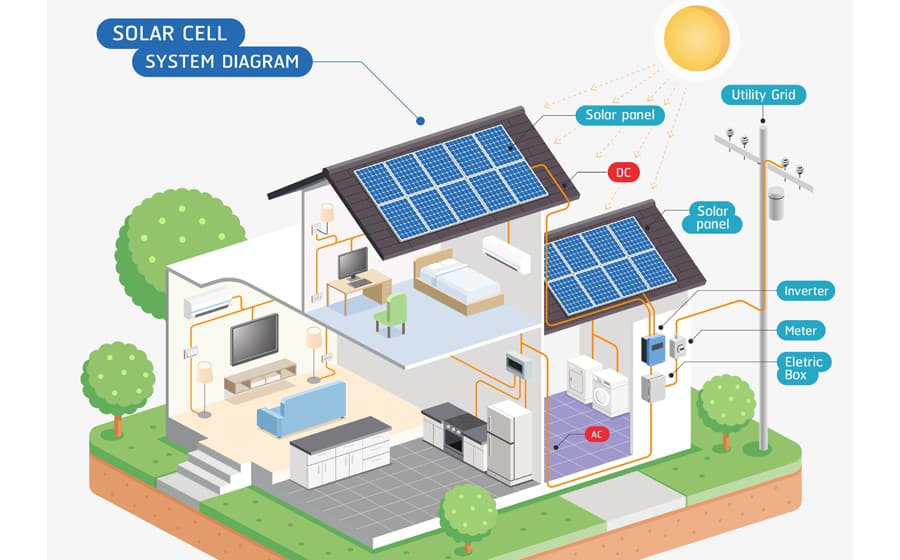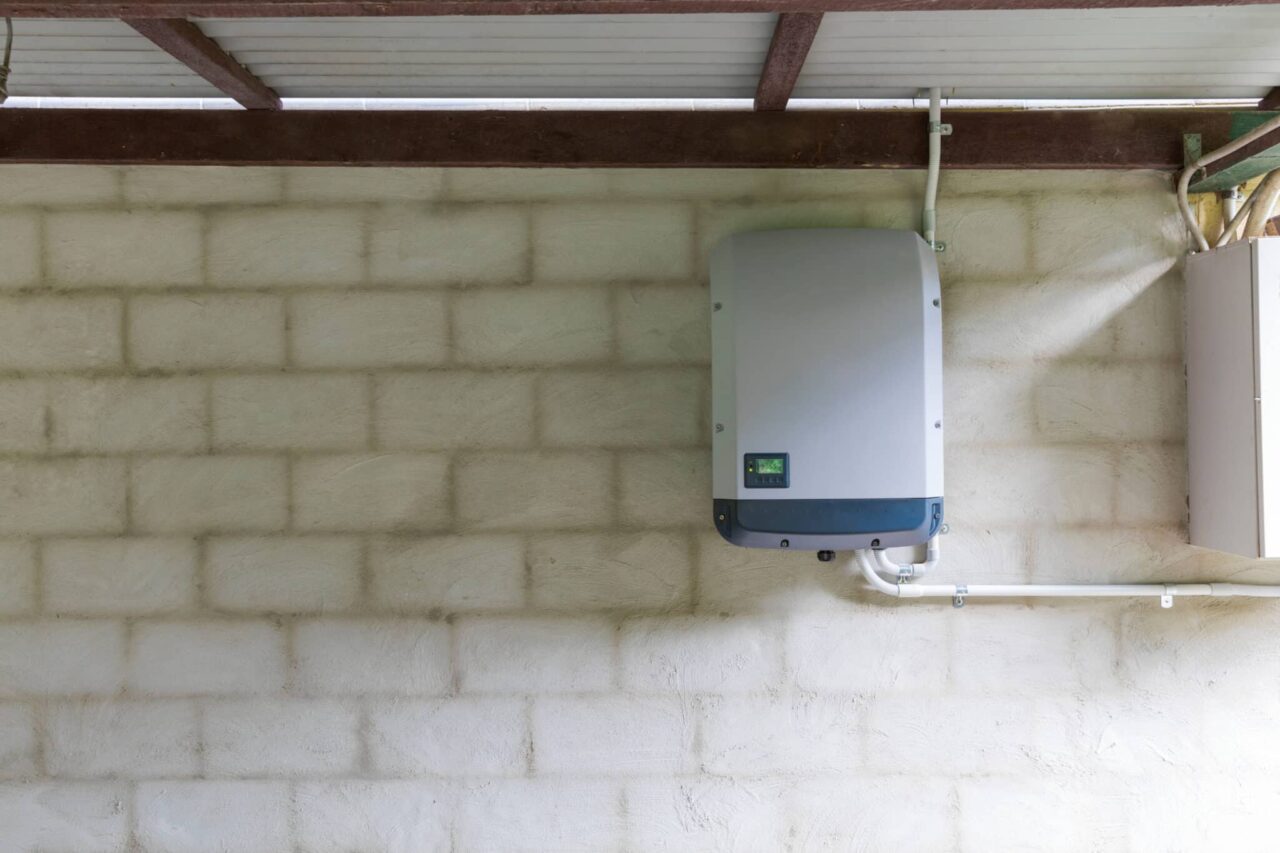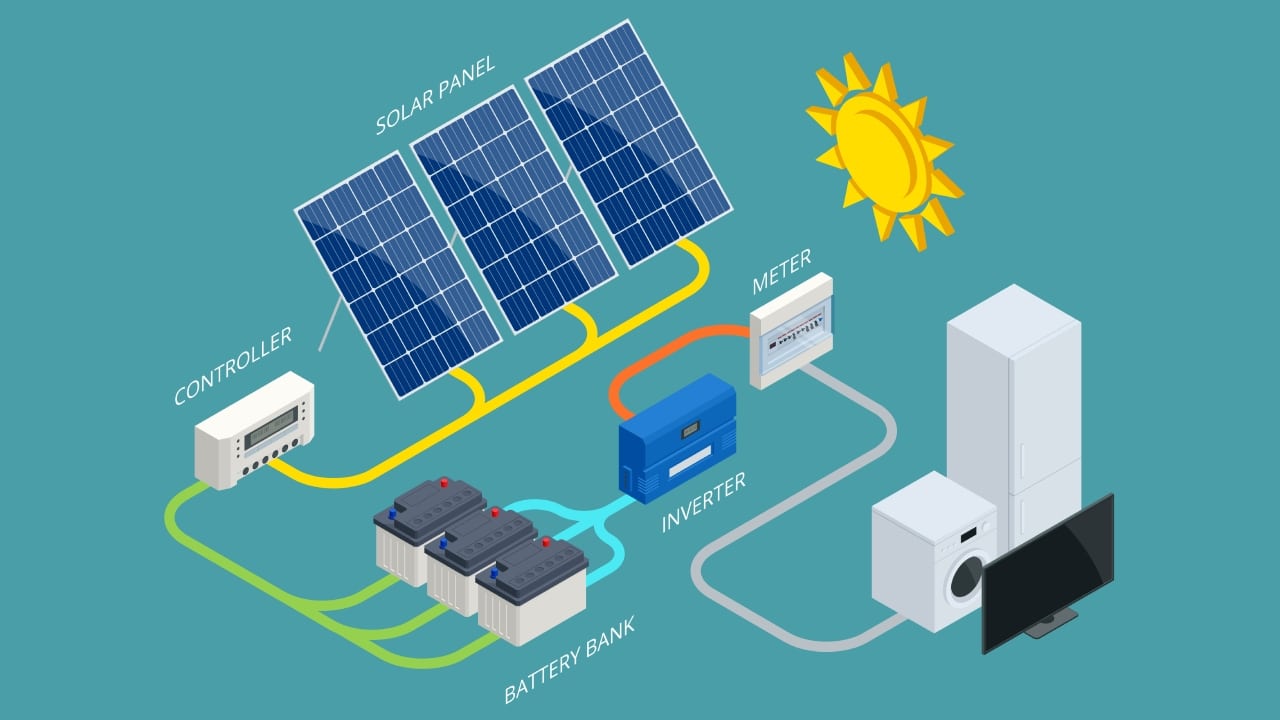Disclosure: FMB Home Picks is committed to delivering independent advice and reviews on home products and services. When you purchase through links on our site, we may earn an affiliate commission. Learn more Contact us.
With energy costs rising everywhere, understanding how solar panels work and whether they could be a good option for your home is the first step in understanding how to reduce your electricity bill and contribute to a greener planet.
The average home can save £1,190 every year with solar panels!
Solar energy is the fastest-growing source of power, but understanding how do solar panels work is key to choosing the best system for your home. While the technology itself is quite simple, there are a number of factors that can affect how much power – and how efficiently – it produces.
Everything from the shape of your roof to your local climate can impact how solar panels work. In this guide, we’ll explain what solar technology is, what the panels are made of, the role of an inverter and how your system converts this energy into power you can use within your home.
Find out about 0% VAT measures on energy efficiency installation.
Solar power is the process of using photovoltaic technology to convert sunlight into electricity. It’s one of the cheapest forms of renewable energy and accounted for 4% of global electricity consumption in 2021. The International Energy Agency has set a target for 20% by 2050.
While solar power has been used privately for decades, governments have begun investing in solar power infrastructure over the last 10 years in a bid to produce more clean energy.
There are two ways of producing solar power. The most popular is a system of photovoltaic panels mounted on rooftops or on the ground in what’s called a solar farm. This type of system converts sunlight directly into electricity.
The second method is called concentrated solar power. These systems rely on a network of mirrors or lenses to concentrate light in one, small area. This concentrated light becomes heat, also known as thermal energy, which can then be used to power an engine to generate electricity.
Photovoltaic solar power is by far the most popular. It requires fewer steps and machinery. As prices have fallen over the last 20 years, it’s become much more widespread and the preferred method of creating solar power.
Because concentrated solar power is largely used in industrial applications, we will focus on how photovoltaic solar panels work for the purposes of this article.

Solar panels convert sunlight to DC electrical charge, an inverter converts this to AC, which is used to power your home. Any excess power can be sold back to the National Grid.
How solar panels work really boils down to basic physics. Photovoltaic solar panels are constructed cells made with semiconducting materials – typically silicon – that convert light directly into power that can be used to generate electricity. Photons in the electromagnetic radiation from the sun heat the semiconductive cells within a solar panel, and the increased temperature causes electrons to start moving around. This then creates an electric current. This process is called the photovoltaic effect.
The electric current that’s generated is then captured by plates and wires within the solar panel and converted into a usable current that is delivered to your home. It can power anything in your home that runs on electricity, from your toaster to your TV.
Solar panels are designed with an anti-reflective coating to help increase the amount of sunlight they absorb. They also typically come encased in glass to better protect the cells. Within that case, there is also insulation to help regulate the temperature inside the panel. If a solar panel gets too hot, its efficiency will drop.

Solar panels work in all weathers and all seasons. Naturally, you should expect reduced power in the winter, however.
One of the most common questions from people thinking about taking the plunge into solar energy is how solar panels work in adverse weather. The simple answer is: if it’s light enough to see, your solar panels will generate electricity, but adverse weather does affect their output and efficiency. Solar panels perform best in the summer when the days are longer and light is strongest.
Because their output is stronger in summer many people tend to think solar panels work best when it’s warm, but this isn’t the case. If the temperature gets too hot, solar panels generate less voltage and become less efficient.
Solar panels are more efficient in colder weather, which might lead you to think they perform best in winter. However the shorter days in winter – and more cloud cover – means they don’t produce as much electricity as they do in summer. But what they do produce, they do so more efficiently in the colder temperatures.

In spite of our changeable weather, the UK climate is perfect for solar power.
Because the UK gets more than eight hours of daylight each day and has pretty mild temperatures year-round, it’s regarded as an ideal climate for solar power.
The UK does often have overcast weather, but how solar panels work is by converting light – any light – into electricity. Because the UK – being so far north – has such long days in the late spring through late summer, solar panels can absorb more light than they can in other parts of Europe that are further south.
Of course, the shorter days in winter mean they have less light to work with.
Even on cloudy days, solar panels will generate electricity. Their output won’t be as high as it is on sunny days with little cloud cover, but the rule still applies: if you can see outside, there is enough light for solar panels to do their job.
Solar panels will still work in shade, but like the other scenarios above, their output will be reduced. How solar panels work best is when mounted in an open, south-facing location.
One of the downsides of solar panel systems has always been that the output is affected by the weakest performing panel. This is because the panels are all interlinked. In other words, if you have a tree that continually shades one of your solar panels, the output of each panel in your system will be dampened.
However, new inverter technology has improved upon this, allowing each panel in a system to operate independently, raising the performance of the whole.

Solar power inverters convert the generated power from DC to AC so it can be used in your home.
Solar inverters convert the direct current (DC) electricity that’s produced by solar cells into usable alternating current (AC) electricity that you can use in your home. The DC electricity generated by your solar panels, on its own, isn’t usable by your home appliances and electronics, nor can it be fed into the National Grid.
A solar inverter works by channeling the DC electricity your solar panels generate through a transformer. The transformer reduces the voltage and converts the current to AC, which is usable within your home and can be fed into the National Grid. Usually, there are at least two of these transformers within an inverter.
The inverter you need depends on your system (which depends on your property and location), but they typically cost around £500 to £1,500. When you get a quote from a local solar installer, the inverter cost should be included. If it’s not clear, make sure to ask before proceeding with the work. A good installer should give you an honest recommendation on the best inverter based on the size and output of your solar panel system, the amount of energy it produces, and how much electricity you consume.
You should expect a new solar inverter to last about 10-15 years before its efficiency wanes enough that it should be replaced.
The efficiency of solar panels depends on a number of factors. First and foremost is the quality of your panels and the cells within. The best solar panels have thicker, purer photovoltaic cells that are more efficient and output more energy. As you might imagine, these are more expensive.
The size of your system also plays a part. The more panels you can fit on your roof, the more energy you can produce to cover the electricity needs of your house. The purer, more efficient solar panels on the market need less space to generate the same amount of energy as the cheaper alternatives, so it’s worth running the numbers to see if investing in a more expensive system pays better dividends longer term.
Another big factor in the efficiency of your solar panels is your roof. Is it south-facing with open sun? Do trees surround your roof that might shade it in summer? These are things to consider, and your installer can advise.
Roof angle is also important. The angle of the sun is different depending on where you live, so the angle of your roof will play a part in how much sunlight your panels absorb. As a general rule, the ideal angle lies between 25 and 75 degrees, according to installers.
Solar panels generally have a lifespan of around 30 years. After this point, their efficiency starts to wane and they generate less electricity from their cells. Most solar panels these days claim to be able to generate 85-90% of their output potential after 25-30 years.
Many solar panels also come with warranties that guarantee their performance will not drop below 80% within the warranty period, which is sometimes as long as 20-25 years.
In proper conditions and with proper care, you might find that your solar panels can last more than 40 years before their performance warrants replacing them.
Read our guide to the best solar panels in the UK in 2022 or find out how solar panels are installed. We’ve also researched the costs to work our if solar panels are worth the investment.

There are several components in a complete solar power system that work together. (Image credit: Adobe)
If you’re wondering, are solar panels worth it? It’s probably useful that you know what the benefits of solar panels are and if they are right for you and your household.
The main disadvantage of solar energy has long been the high cost of the initial investment. The average cost of £10,000 meant that homeowners could wait 15 to 20 years to see a return on their investment. But in recent years, the falling cost of solar panel systems coupled with the rising cost of energy means that you can now see a return on your investment much sooner.
Solar energy is also weather-dependent, which can be another disadvantage depending on where you live. If you live in an open location where it’s sunny most of the year, investing in a solar panel system makes a lot of financial (and environmental) sense. But if you live somewhere without much daylight, you might be better off investing in ground or air source heat pumps to generate electricity.
The other disadvantage is space. Quite frankly, you need a lot of space to host a solar panel system that can power your home.
It is possible to run your whole house on solar panel if you have a powerful enough system, lots of sun and panels that operate at maximum efficiency. There are so many variables per home and system to take into consideration. So while it is possible, you probably shouldn’t expect to live solely on the energy generated from your solar panels.
Because solar panels require sunlight to generate electricity, you will not get any output at night. To use your solar power at night, it’s best to pair your solar panels with a battery storage system. Any unused solar energy generated during the day will be diverted to your battery, where it is stored for use at night.